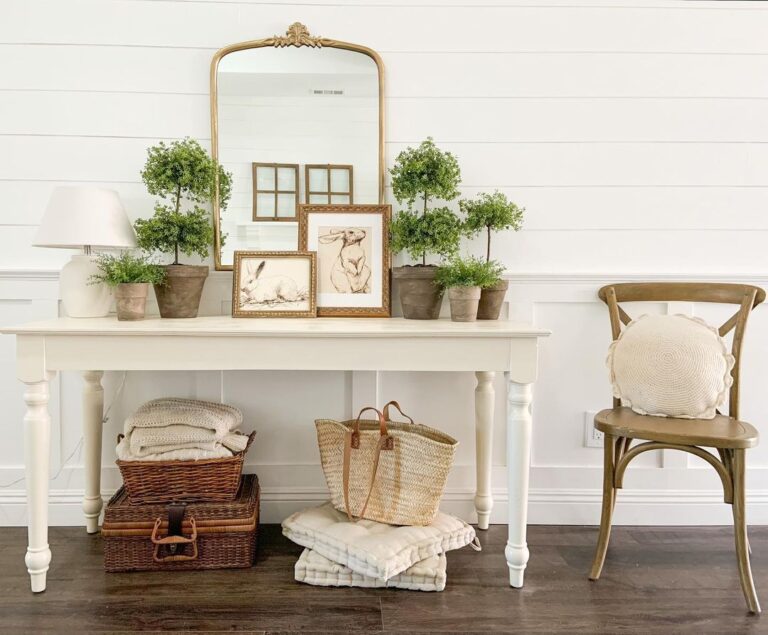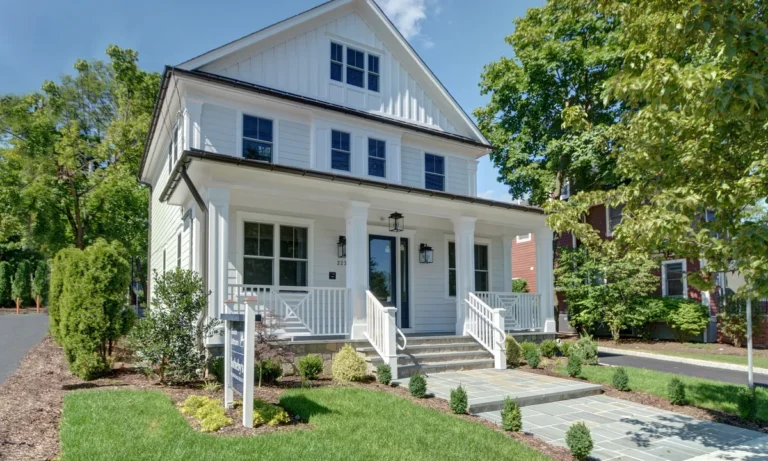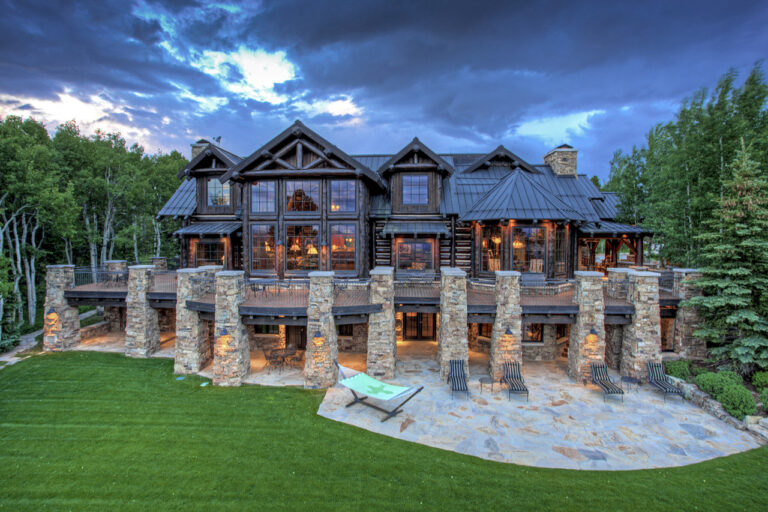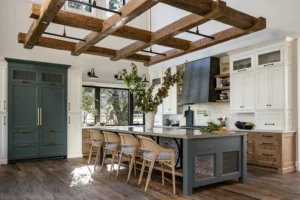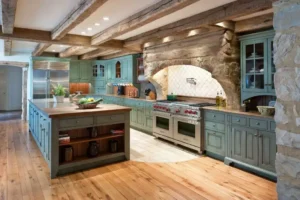It’s a cold December evening, and the scent of ginger, cinnamon, and freshly baked cookies fills the kitchen. A colorful assortment of candies, icing tubes, and small gingerbread walls await on the table. Children and adults gather around, their fingers sticky with frosting as they carefully assemble walls and roofs, adding gumdrops and peppermint swirls to create miniature masterpieces. As laughter and playful competition ensue, the simple act of building a gingerbread house transforms into a beloved holiday ritual. With its pre-baked pieces and endless decorative possibilities, the gingerbread house kit has become a staple in many homes during the holiday season — a sweet blend of creativity, tradition, and shared joy.
A Brief History of Gingerbread and Its Festive Evolution
Gingerbread has a long and fascinating history, tracing its roots back to ancient civilizations. Ginger, a spice originating in Asia, was first used for medicinal purposes. Over time, it made its way into European kitchens, where it was combined with other herbs, honey, and sugar to create what we now recognize as gingerbread. By the Middle Ages, Gingerbread House Kits had become a festive delicacy, often shaped into figures or elaborately decorated to mark special occasions.
The gingerbread house tradition, however, is thought to have originated in 19th-century Germany. Inspired by the Brothers Grimm fairy tale Hansel and Gretel, in which two children stumble upon a house made of candy and gingerbread, German bakers began crafting intricate gingerbread homes around Christmastime, a practice that soon spread across Europe and the United States. With its whimsical decorations and edible architecture, the gingerbread house became a holiday celebration symbol.
The Rise of the Gingerbread House Kit
While homemade gingerbread houses can be labor-intensive, requiring careful baking and assembly, gingerbread house kits revolutionized the tradition in the mid-20th century. These kits typically include pre-baked gingerbread pieces for the walls and roof, pre-mixed royal icing (used as edible “glue”), and candies for decoration.
Gingerbread house kits make it easy for families and individuals to partake in the fun of building a gingerbread house without the hassle of baking from scratch. According to the market research firm IBISWorld, the demand for seasonal baking kits, including gingerbread house kits, has increased steadily in the U.S. over the past decade, with a 4.5% average annual growth rate in sales from 2013 to 2023. This surge is driven by several factors: the convenience of pre-packaged kits, the rising popularity of DIY holiday traditions, and the influence of social media, where people love to showcase their festive creations.
A $3 Billion Industry: The Popularity of Gingerbread House Kits
The gingerbread house kit industry is a lucrative segment of the broader holiday food and decoration market, valued at over $3 billion in the United States alone. According to NielsenIQ, sales of gingerbread house kits typically peak in November and December, with approximately 60% of annual sales occurring during these two months.
Major retailers such as Target, Walmart, and Amazon see significant demand for these kits during the holiday season. A report from Statista indicates that in 2022, 27% of U.S. households purchased a gingerbread house kit, with total sales amounting to more than $150 million during the holiday quarter. The average price of a gingerbread house kit ranges from $10 to $40, depending on the kit’s size, brand, and complexity.
One factor contributing to the growing popularity of gingerbread house kits is the rise of specialty kits. Brands now offer themed gingerbread houses, from traditional cottages to modern designs like gingerbread “tiny houses” or candy-covered mansions. There are even kits for specific characters and franchises, such as Disney-themed gingerbread houses or Star Wars-inspired gingerbread structures, catering to a wide range of consumers.
The Social Aspect: A Family Tradition and a Competitive Craft
Building a gingerbread house isn’t just about the final product — it’s about the experience of creating it. For many families, constructing a gingerbread house is an annual holiday tradition, an opportunity to gather together, get creative, and bond over a fun and sometimes messy project. It’s a moment of togetherness amid the busy holiday season, where each family member can contribute by assembling the structure, piping on icing, or carefully placing candy decorations.
According to a survey by The National Confectioners Association, 64% of respondents who purchased gingerbread house kits said they did so as part of a family tradition, with nearly 80% saying they engaged in the activity with children. The interactive nature of gingerbread house building, combined with the nostalgia it evokes, makes it a multigenerational pastime that continues to thrive.
But gingerbread house construction has evolved beyond the family kitchen. Building gingerbread houses has become a competitive endeavor in recent years, with contests held at local, national, and even international levels. One of the most famous is the National Gingerbread House Competition, held annually at the Omni Grove Park Inn in Asheville, North Carolina. Started in 1992, the competition attracts participants from around the country, with elaborate entries that often take weeks to design and build. The competition’s top prize includes a cash award and wide recognition, with the event drawing media coverage from outlets such as The Food Network and Good Morning America.
The competition aspect has also trickled down to casual social media users, with platforms like Instagram and TikTok flooded with photos and videos of gingerbread houses. The hashtag #gingerbreadhouse has over 1.8 million posts on Instagram as of December 2023, with users showing off their creations, whether they’re works of art or amusing DIY disasters.
Sustainability and New Trends in Gingerbread House Kits
The gingerbread house industry is also adapting with the growing focus on sustainability and eco-friendly practices. Many consumers now seek organic, non-GMO, and gluten-free gingerbread house kits to accommodate dietary preferences and health-conscious lifestyles. Companies like Trader Joe’s and Williams Sonoma have responded to this trend by offering kits with organic ingredients free from artificial colors and preservatives.
Additionally, there is a shift toward reducing packaging waste. Some brands offer kits with minimal plastic use instead of recyclable or compostable materials. This shift appeals to environmentally conscious consumers and aligns with broader trends in sustainable product development.
The Future of Gingerbread House Kits
As the holiday season evolves, so does the gingerbread house kit. According to Technavio, the global gingerbread market is expected to grow by $4.5 billion between 2021 and 2025, with gingerbread house kits playing a significant role in this expansion. Technological advancements, such as 3D-printed gingerbread molds and custom gingerbread house templates, are expected to become more mainstream, allowing for even more creative designs and intricate builds.
Moreover, as social media continues to influence holiday traditions, gingerbread house kits are likely to gain popularity among younger generations. The blend of tradition and modern creativity ensures this sweet holiday activity will endure for years.
Conclusion
The gingerbread house kit is more than just a box of cookies and candies; it’s a vehicle for holiday magic, family bonding, and artistic expression. From its humble beginnings in German kitchens to its status as a $150 million industry in the U.S., the gingerbread house has captured people’s hearts worldwide. Whether you’re a professional competitor crafting a gingerbread masterpiece or a parent helping your child assemble a candy-coated cottage, the joy of building a gingerbread house remains a timeless and cherished tradition.


